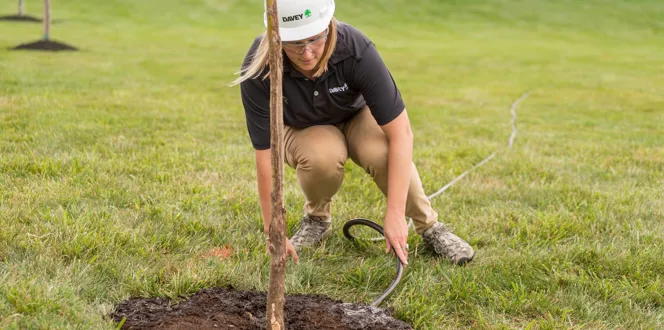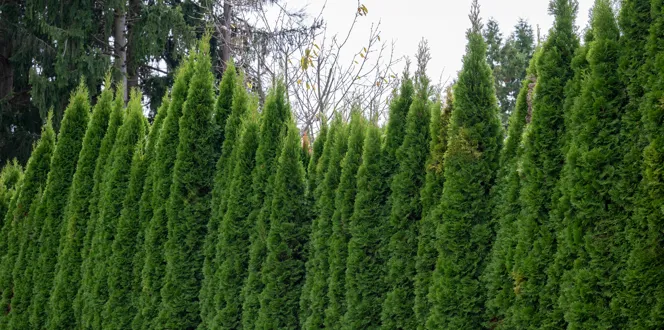Sometimes you have a tree that can use a little help when it comes to nutrition.
Maybe you notice its leaves are smaller or its canopy is thinner. Or you might notice some dead branches or branch tips. You might even see discolored leaves.
These can be signs of a lack of adequate nutrients that your tree would normally get from the soil, as well as from slow-release fertilization.
Soils in built-up home developments are typically depleted of nutrients creating tough environments for healthy tree growth. This is when adding humates to fertilizer might be necessary.
Let’s discuss what humate is, what it can do to help deliver nutrients to your tree, and how certified arborists use this tool to boost tree health and vigor.
What Is Humate?
Your first question as we discuss this soil additive might be, “What is humate?”
You may have heard of 'humate fertilizer' before, but humate and fertilizer are actually two different soil care treatments. They are often mixed together, but they each have unique benefits- fertilizer adds nutrients to the soil, while humate helps plants absorb those nutrients.
Humates are organic materials derived from leonardite, which is a coal-like organic mineral formed from prehistoric peat. It is then mined and processed to create a stable form of organic matter that is rich in humic acids. Humates are soluble in water, allowing them to be mixed with liquid fertilizers.
Benefits Of Using Humates
In your soil, humates help improve nutrient absorption by your tree. They also improve water retention so the soil can hold onto more water from rain and irrigation.
How does adding humate to fertilizer help manage soil health? Humates are a carbon and energy source for beneficial microbes, stimulating this activity in your soil and unlocking the natural fertility that’s already there.
Humates also coat soil aggregates, helping stabilize them and improving soil structure to maintain water drainage, airflow, and root growth. This gives the soil more resilience against soil compaction and protects root systems from pathogens.
Should Humates Be Applied Before or After Fertilizer?
You don’t have to apply humate before or after fertilizer; you can actually mix humates with other fertilizers and apply them at the same time. Adding humates with fertilizers can maximize the potential improvements fertilizers offer.
Certified arborists will apply humates with fertilizer as surface drench applications, as well as in subsurface injection applications where they work even better because of their soil stabilization abilities.
How Often Should Humates Be Applied?
Certified arborists will apply humate fertilizers every time they apply liquid fertilizers.
For tree and shrub fertilization programs, this usually means one applications per year. For turf fertilization programs, this will mean two or more applications per year.







